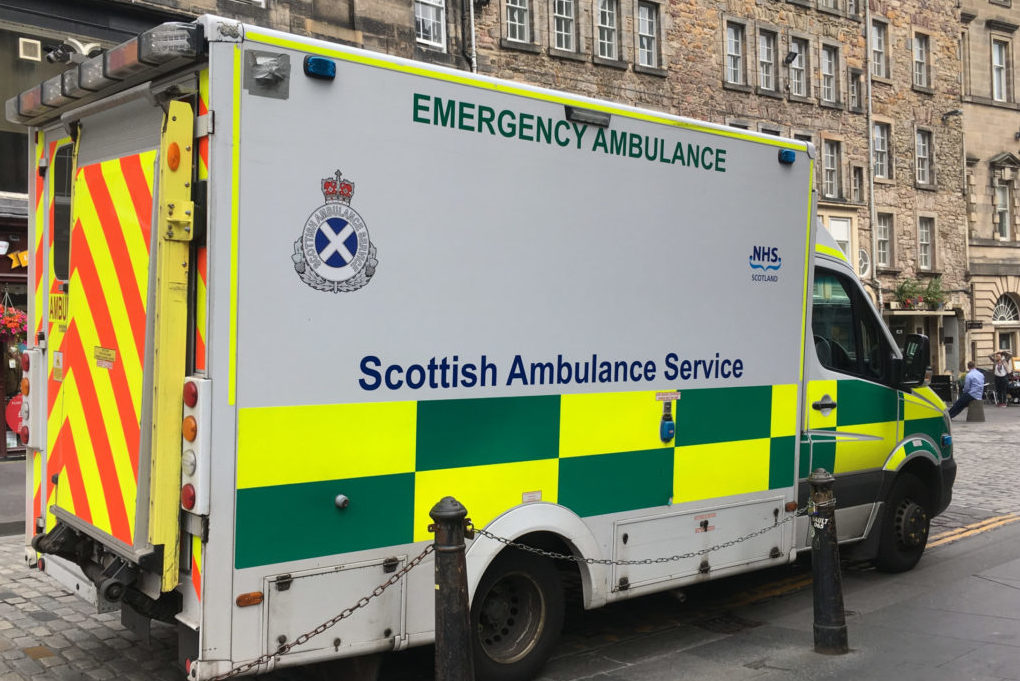‘Utilising Consultant Connect saved an ambulance being used for patient conveyance, it eliminated his ED wait, and, most importantly, it eradicated the delay in his care.’
In August 2023, a ‘call before convey’ pilot was set up in NHS Lanarkshire via Consultant Connect, allowing Scottish Ambulance Service clinicians to contact ED colleagues in the Flow Navigation Centre directly. Callers are either connected to an ED consultant or an advanced paramedic practitioner working within the Flow Navigation Centre.
The initiative was designed for clinicians to rapidly discuss patients with non-life-threatening conditions, deciding on the best clinical destination, often bypassing ED. As a result of the successful pilot, contacting the Flow Navigation Centre via Consultant Connect has been established as a business-as-usual pathway before conveying patients with non-life-threatening conditions. We spoke with three clinicians in NHS Lanarkshire to find out how their team utilises the service and how it benefits them and their patients. Read more here or below:
Answering ‘call before convey’ queries
Sharleen Anderson, Ceri Wares, and Sharleen Johnston are all Flow Navigation Centre clinicians in NHS Lanarkshire. The team answers ‘call before convey’ queries from ambulance crews to discuss suitable pathways as alternatives to ED.
Patient with ongoing heart failure avoids unnecessary lengthy hospital wait, allowing him to be cared for at home
‘I received a call in the Flow Navigation Centre from a crew who had attended to a patient experiencing breathlessness following a 999 call. He had ongoing heart failure, with symptoms progressing over the last five weeks. The patient lived alone and had no care plan in place, although he had recently been prescribed a diuretic by his GP. On this occasion, the patient’s brother-in-law came to visit and felt that the patient’s problems had worsened and required immediate medical care.
‘After carrying out observations, the crew found that the patient’s symptoms had settled, and they phoned the Flow Navigation Centre via Consultant Connect because they weren’t sure of the most suitable pathway. After a conversation, we decided that the preferred action was to refer the patient to the Hospital at Home Team, with a contingency plan to refer him to the medics at the hospital if needed. Given his symptoms, we agreed that the patient probably required more input than what the GP could manage at this stage, and the Hospital at Home Team also deal with cardiac failure as part of their inclusion criteria.
‘The Hospital at Home Team confirmed that the patient was suitable for this pathway and visited him shortly after. If Consultant Connect had not facilitated this conversation, the patient would’ve been conveyed to hospital, so it’s reducing avoidable admissions and pressures on A&E. He would’ve needed to be assessed in the casualty department before seeing the medics, and he possibly would’ve been waiting to go into hospital for the initial assessment, too. Even if, on arrival, the Hospital at Home Team decided he would be better cared for in the hospital, he would have then been a direct admission. This means they would have carried out a consultation, assessment, ECG, and bloods, then booked him in so that he’d be seen sooner.’
– Sharleen Anderson, Advanced Paramedic Practitioner.
Patient presenting with lower respiratory tract infection and shortness of breath avoids stress of lengthy hospital admission and receives expedited care
‘I received a call in the Flow Navigation Centre from a paramedic on the scene with a patient with a lower respiratory tract infection and shortness of breath. The paramedic identified that the patient possibly didn’t require admission. Still, they needed an additional level of care, and the paramedic rang for decision support on referring them to the Hospital at Home Team. The Hospital at Home Team arrived within an hour, initiated a care plan, and the patient remained in the comfort of their own home. This meant the patient didn’t experience the stress of an admission alongside long queue times in corridors, whilst ensuring they got the care they needed fast.
‘Utilisation of this pathway also relieved pressure off an already-busy ED, so it really is invaluable. Additionally, using the Hospital at Home Team increases the awareness of the service, so giving them appropriate referrals is as beneficial for them as it is for the patient.’
– Sharleen Johnston, Advanced Nurse Practitioner.
Attending patients with non-life-threatening conditions
The team can task the Advanced Practitioner (AP) car to attend to patients who they feel do not need to be seen in hospital but do require an extra level of care. They also attend to patients who have contacted the ambulance service but don’t require an immediate response. The team can conduct face-to-face assessments to decide on the best course of action, prescribe antibiotics, and contact the patient’s GP or a hospital specialty for further input.
How do Flow Navigation Centre clinicians utilise Consultant Connect when attending to patients?
‘When I’m on the road to carry out assessments, I contact the Flow Navigation Centre via Consultant Connect for most of my cases unless it is an immediately life-threatening situation. I don’t always require advice, but if I am considering a hospital conveyance, sometimes we can get patients referred to prevent them from sitting in a waiting room or the ambulance. Waiting times are a massive problem at the moment because there isn’t enough space for all the patients.
Before Consultant Connect was available, the only other option was to phone the local A&E department and hope that a specialist was available for a patient discussion.’
– Ceri Wares, Trainee Advanced Paramedic Practitioner.
‘I use it all the time, especially at night; because we’re lone workers, it’s a valuable link to access another level of decision-making. It’s great that we can contact our emergency medicine colleagues in this way to support our decisions and access patient notes. As mobile clinicians, we don’t have access to the full platform of portals to read patient notes, so this service is vital, especially if the patient has a cognitive impairment or is a poor historian. It’s like having the specialist sat next to you, and they have access to other information you might not.’
– Sharleen Johnston.
Urology patient with blood in catheter bypasses ED and is conveyed directly to specialty department
‘A couple of weeks ago, I attended to a patient who had recently had a procedure for kidney stones and had had a catheter as a result. The patient’s wife had called the ambulance service because there was blood in his catheter, and she was concerned. At the scene, I used the Consultant Connect App to speak to a urology specialist at University Hospital Monklands. Monklands isn’t the patient’s nearest A&E department, but the urology department in Lanarkshire is based there. If the patient had been conveyed to his nearest A&E department first, he would’ve likely needed a transfer to the urology department at Monklands at some point. I knew the hospital transfer would not have been a high priority in this scenario, and the patient could have been waiting 12+ hours.
‘I spoke to the on-call urologist, and he happened to know the patient and was happy to speak directly with the family. Later, I phoned the patient to confirm he’d received a call-back, and the urologist had said he was happy for the patient’s wife to drive him directly to the urology department at Monklands, bypassing ED. On this occasion, utilising Consultant Connect saved an ambulance being used for patient conveyance, it eliminated his ED wait, and, most importantly, it eradicated the delay in his care; he got the response he needed the first time.’
– Ceri Wares.
What advice would you give to ambulance clinicians who are hesitant to use the service?
‘Some crews feel that calling us to discuss a management plan removes their autonomy, but they are an independent practitioner in their own right, and we’re not taking that away. It’s easy to forget that conveying patients to the hospital and dropping them off in A&E is the first step in a patient’s journey. They’re facing waits in uncomfortable chairs, potentially for more than 12 hours, then being moved to another department where there might not be any available beds. This can be 14-15 hours after the initial call to the ambulance service was made, and even then, they might’ve had an extensive wait for an ambulance in the first instance.
‘Also, it can be priceless for ambulance clinicians at the beginning of their clinical expertise. I recently spoke with a newly qualified paramedic who said he was still very nervous about making clinical decisions. Ambulance crews are always welcome to talk to us, even if it’s just for reassurance and for us to confirm they are doing the right thing.’
– Ceri Wares.
‘Utilising Consultant Connect encompasses all pathways: mental health, falls, hospital at home. We don’t make the decisions for the ambulance crews; they’re the clinician on the scene; we’re available as a point of contact to say, “Have you considered x, y, or z?” We’re here to advise and provide information on available pathways to support the clinician on scene in making an informed decision. Sometimes, it can be vital to talk through a patient’s presentation and have a fresh set of ears or eyes on the situation. I’d encourage ambulance crews to use us as a resource.’
– Sharleen Johnston.





